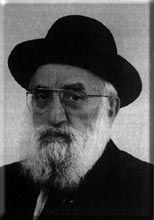Beit Midrash
- Jewish Laws and Thoughts
- Jewish Laws and Customs
It is natural therefore that our rabbis saw the moon as a symbolic creation. We are all aware of the parable in Midrash that the sun and the moon were originally to be of equal size and brightness. The moon complained to God "that two kings cannot share one crown." The moon apparently meant to dispossess the sun of its glory but the Lord ordered the moon to instead diminish itself. The moon therefore became the symbol of unwarranted jealousy and the example of the negative consequences the jealous one brings upon one’s self. The moon is also the symbol of reflected light, in effect allowing the light of the sun to reach us even when the sun cannot be visible to our part of the world at night. If Moshe was likened to the sun than his student and disciple Yehoshua was likened to the moon. Reflected light is also light but it is not of the caliber and strength of original light. The Jewish calendar is basically a lunar calendar of 354 days with corrections built into it to prevent it from being completely inconsistent with the solar calendar of 365 days per year. Thus we have seven leap years with and additional leap month included in every nineteen year cycle. This is to insure that Pesach falls always in the month of springtime in the Land of Israel. Other faiths, such as the Moslems, also follow a lunar calendar but have no method of reconciliation with the solar year. The "new moon" that marks the beginning of every lunar monthly cycle is celebrated as a minor holiday in Jewish ritual and society.
As a result of all of this it is also perfectly understandable why the rabbis saw fit to compare the Jewish people to the moon. The Jewish people are seen as being the reflection of the Divine light that fuels the continuity of our world. The Torah that we possess given to us by God at Sinai is the perfect reflection of its Giver and of His guidance to us in all human affairs. The Jewish people as the possessor of God’s Torah are the moon, so to speak, in relationship so to speak to the sun - God Himself. The rabbis also saw in the fact that the moon waxes and wanes every month the fate of the Jewish people - of constant change and of the ups and downs of Jewish history. It also came to symbolize the strength and resilience of the Jewish people that there would always be a moon and that it would always rise again even if for a period of time its appearance was not yet seen or even deemed likely to be seen again. Thus a special ceremony celebrating the appearance of the new moon has become part of Jewish liturgy. The ceremony is a reaffirmation of Jewish continuity and eternity. We recite in the body of the ceremony that "David, the king of Israel is yet alive and exists." The spark of eternity that exists within the Jewish people still fuels our path towards our future. The moon has much to teach us.

Temurah
Rabbi Yirmiyohu Kaganoff | 18 Sivan 5784

The Basics of Birkas Hagomeil
Rabbi Yirmiyohu Kaganoff | Av 13 5780

History of a Calendrical Dispute – and its Resolution
Rabbi Shlomo Hecht | 2 Shvat 5785






















